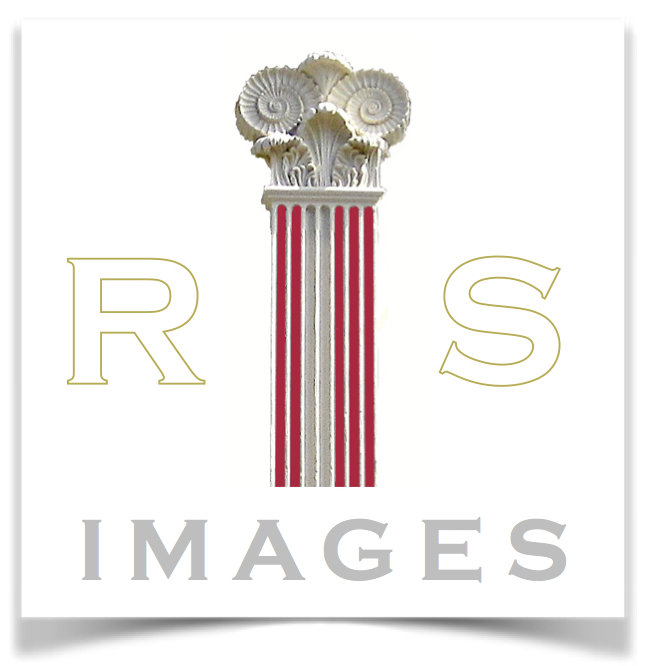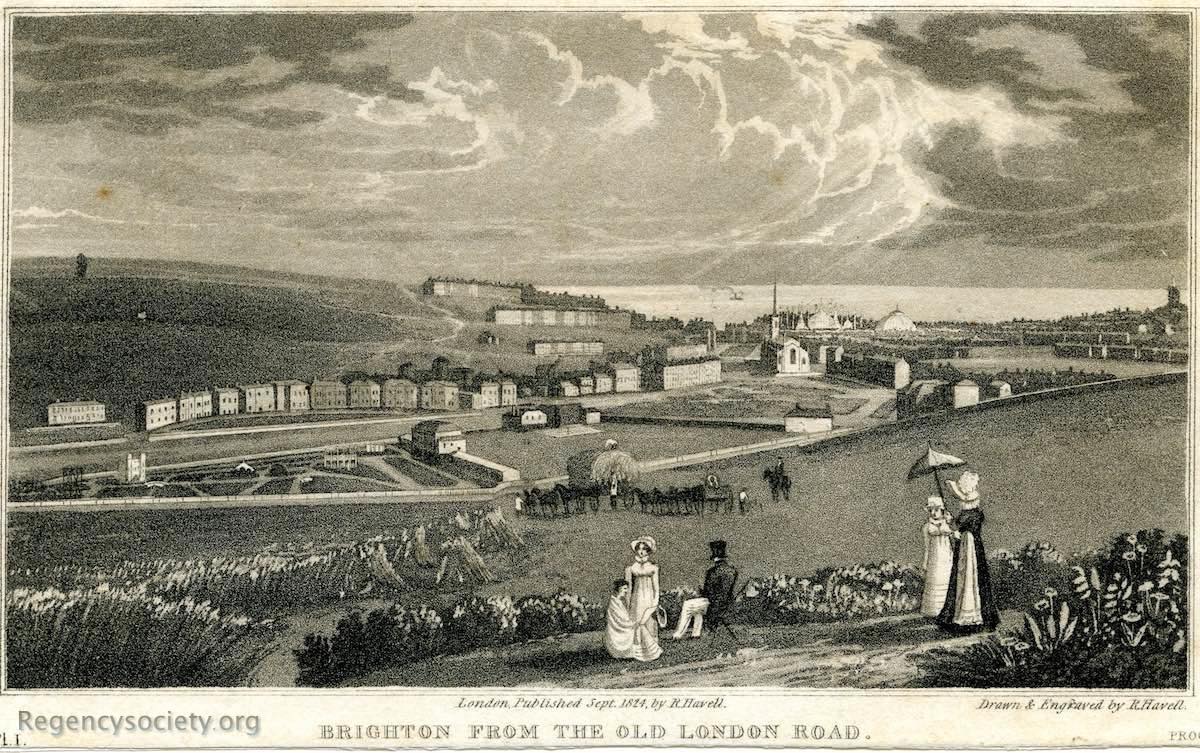BPC00456
Aquatint engraving by and after Robert Havell and published by him in 1824. In 1825 it was included in E W Brayley’s Topographical Sketches of Brighthelmstone, with ten other illustrations.
On the far left are the small alms houses at the bottom of Elm Grove; these were the earliest Gothic-style buildings in Brighton. To the right of those is Hanover Crescent, started in 1822 and not finished at this stage. (Development of the Crescent was started by the entrepreneur Henry Brooker in 1814, with A H Wilds as the architect). Middle distance to the right is St Peter’s Church, planned but not actually built at this time, so Havell must have seen the plans and depicted the intended spire that was never built, and placed the church at more of an east-west orientation than its final position. Beyond the church and to the right, the Dome Stables are visible. On the right-hand margin, St Nicholas Church can be seen on the top of Church Hill.
The artist seems to be viewing the town from near the top of the later site of Ditchling Rise, where today it meets the Ditchling Road. The cornfield in the foreground is now the site of Vere Road and Warleigh Road, with the hay wagon and horses standing where the Upper Lewes Road now runs. The triangle of parkland in the left middle distance is Ireland’s Royal Gardens. The large building on the right-hand edge of that is the cricket pavilion, and to the right of that, the flat enclosed field just behind the hay wagon is the Royal Cricket Ground.
Images of Brighton 30 and illustrated on page 21.

